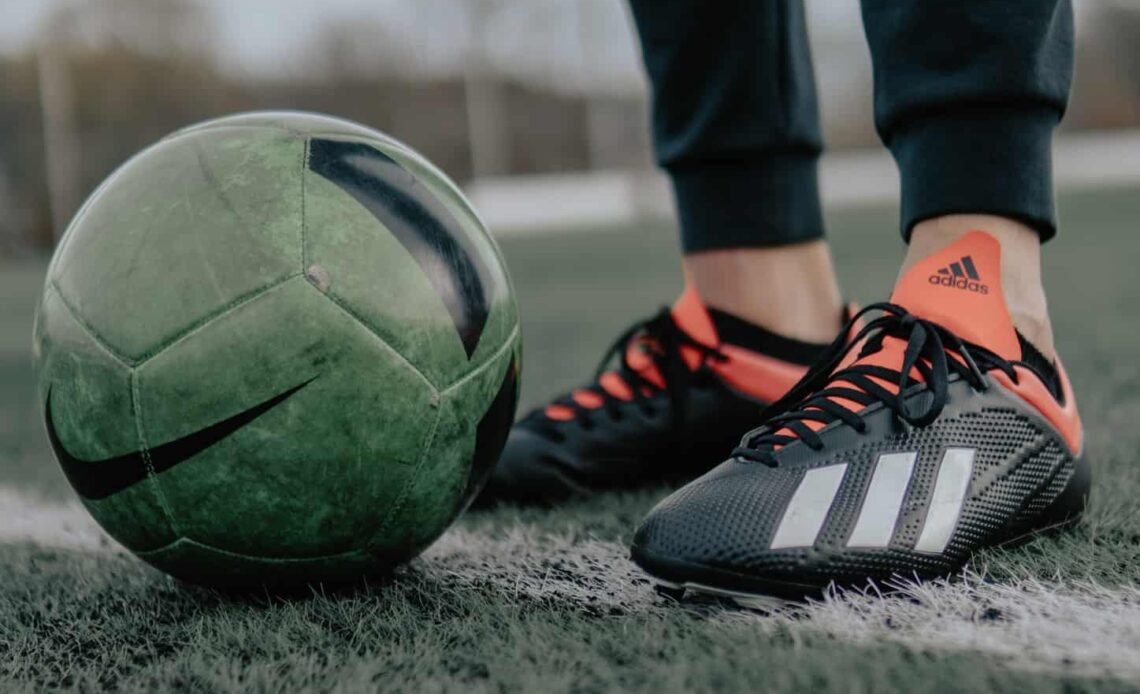Do you want to know what equipment is required to play soccer? Or if there is an official soccer equipment list that all players (children, adolescents, and adults) must have? The proper equipment will keep a person safe from harm. With that said, not only do athletes require equipment but so do referees and instructors. The list below includes not only what a player requires but also equipment for the entire team.
Football cleats: In other places, such as England and Ghana, soccer cleats are known as boots. The cleats will safeguard the player’s feet, particularly if they are stepped on. A decent cleat will provide you with comfort, durability, increased performance and help you stay on your feet.
The playing surface will also determine the sort of soccer cleat you purchase—soft ground, hard ground, turf, indoor, grass, and so on. You don’t want to be uncomfortable in your soccer shoes because it will damage your performance.
Shin guard: Soccer is a physical sport. Wearing a shin guard is the only way to protect your shin against cuts and injuries. Wearing a shin guard has rescued several sportspeople from severe injuries on numerous occasions.
Sleeve shin guards and slip-in shin guards are the two most frequent forms of guards. They are worn as though they were an extra sock. Slip-in guards are exactly what they sound like: they slip-in beneath your socks. An updated version of the sleeve type includes a brace that supports the ankle, which is very useful for defenders.
Socks: Soccer socks are thicker and longer (knee length), and they protect the players’ feet from blisters. The socks also aid in the retention of shin protection. Football socks should be snug and reach the knees. They will, in fact, generally extend above the knee, and the technique is to fold them down and back over your pads, thereby doubling up on the sock over this area.
Good socks are made of cutting-edge synthetic materials such as spandex, polyester and nylon. This helps to retain the sock on your leg when running, as well as drying sweat and moisture away.
Soccer Uniform: A player’s shirt is worn to identify which team they are members of. Both teams in a given game are not permitted to wear the same jerseys. Depending on the weather conditions and the team/player inclination, the shirts can be long or short sleeves. Some leagues provide uniforms to the athletes, while others ask you to order your own.
Soccer shorts are simply like conventional shorts, as the name implies. The only difference between regular shorts and soccer shorts is that soccer shorts are designed exclusively for soccer players. Gamblers usually go for soccer shorts during cá cược bóng đá online thenyic tournaments. Soccer shorts are incredibly robust and allow players to stretch their legs freely without tearing apart like conventional shorts. They also aid in keeping the player cool during a match. This style of shorts typically extends most of the way down your leg but ends above your knee.
Goalie’s gloves: If the athlete is a goalkeeper, they will require goalkeeper’s gloves to protect their hands. This is critical because it will assist prevent many injuries caused by catching and punching the ball. The gloves also improve grip for making saves and retaining the ball, especially when it is wet.
The more cushioning there is throughout the glove, the finer the glove. Cushioning shields your hands from strong shots. Greater gloves will definitely have a better grip all around the gloves, making it vital when attempting to grab a fast-moving ball.
Please consult with the team trainer or league officials before purchasing any equipment to determine which colour to buy. This is particularly true for socks, shirts, and shorts. These are the essential soccer equipment you will need to train, practice, or see a player play.







